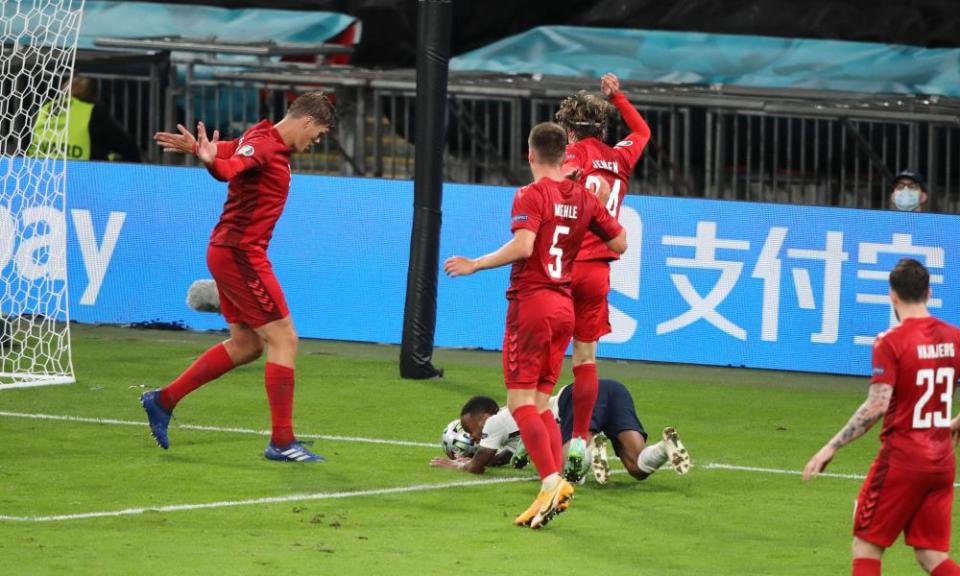VAR set to end Premier League players ‘buying a penalty’ next season

The Premier League is to try to end the art of “buying” a penalty, as it announced tougher refereeing criteria for deciding spot-kicks.
When the 2021-22 season begins, referees are to assess three criteria before deciding whether a penalty should be awarded for a foul challenge. Officials must first consider the degree of contact experienced by the attacking player, then the consequence of that contact, before finally taking into account the motivation of the attacker in reacting to the challenge.
Related: England beat Denmark in extra time to set up Euro 2020 final with Italy
The Premier League’s head of refereeing, Mike Riley, said the decision to change the guidance on penalties followed conversations with top‑flight clubs and players, all of whom wanted spot-kicks awarded only for “proper fouls”. It also comes after a record 125 penalties were awarded in the top flight last season.
“Referees will look for contact and establish clear contact, then ask themselves the question: does that contact have a consequence?” Riley said. “They will then ask themselves a question: has the player used that contact to actually try and win a foul penalty? So it’s not sufficient just to say: ‘Yes, there’s contact.’
“I think that the feedback we’ve had from players, both attackers and defenders, [is that] you want it to be a proper foul that has a consequence, not something that somebody has used slight to contact to go over, and we’ve given the penalty to reward it.”
Riley said he hoped the rules would help to persuade players to stay on their feet in the box. Under the new guidance, the penalty Raheem Sterling won for England against Denmark in the Euro 2020 semi-final would not have been given and, if it had, the decision would be expected to be overturned by VAR.
Riley confirmed this season there will be revisions for the video refereeing technology, with changes to the way it interprets offside decisions set to benefit the attacking team.
VAR assesses whether a player is offside in the buildup to a goal as part of its four key checks but has been criticised for ruling out goals on the tiniest of margins. New rules will apply a different approach, with a final decision made not using the one-pixel-wide lines of the VAR, but the fatter “broadcast lines” used by TV. If the line marking the attacker’s position blurs into the line marking the defender’s position, the attacker will be deemed onside.
“We’ve now reintroduced the benefit of the doubt to the attacking player,” Riley said. “Effectively what we have given back to the game is 20 goals that were disallowed last season by using quite forensic scrutiny. It’s the toenails, the noses of the players that last season were offside – this season they will be onside.”
Riley remains a staunch supporter of the much-criticised technology, three years into what he sees as a five-year process of establishing it. He said Euro 2020 had helped to make the case for VAR, with a light-touch approach allowing the game to flow. This approach, he says, will be followed in the Premier League.
“I think one of the encouraging things that we’re going into next season is with people expecting that threshold to be in a higher place than last year,” he said.

 Yahoo Sport
Yahoo Sport 





































